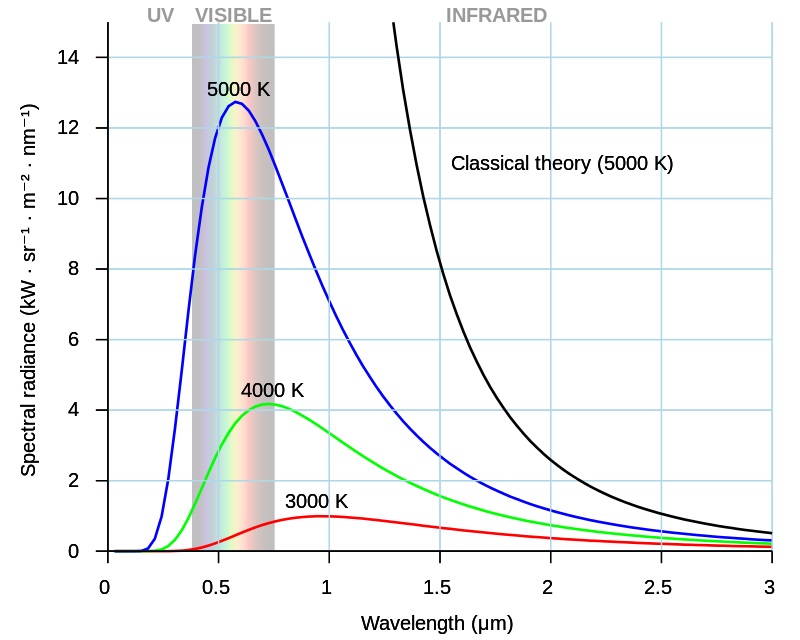 We can perform detective work on stars using their spectrum to determine temperature and chemical composition.
We can perform detective work on stars using their spectrum to determine temperature and chemical composition.
Key Concepts
 A star is a good approximation of a perfect black body, an object that emits all wavelengths of electromagnetic radiation. The wavelength of greatest intensity is determined by Wien's displacement law, which states that peak wavelength is inversely proportional to the absolute temperature of the body.
A star is a good approximation of a perfect black body, an object that emits all wavelengths of electromagnetic radiation. The wavelength of greatest intensity is determined by Wien's displacement law, which states that peak wavelength is inversely proportional to the absolute temperature of the body.
\(\lambda_{\textrm{max}}T=2.9\times10^{-3}\)
- \(\lambda_{\textrm{max}}\) is the wavelength of maximum intensity
- \(T\) is the absolute temperature
- \(2.9 \times10^{-3}\) mK is a constant (note this unit is meter Kelvin not milli Kelvin)
MY PROGRESS
How much of Spectra have you understood?


 There are three types of spectrum:
There are three types of spectrum: Twitter
Twitter  Facebook
Facebook  LinkedIn
LinkedIn